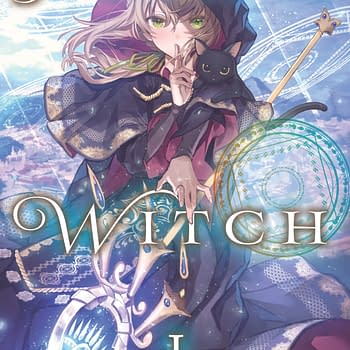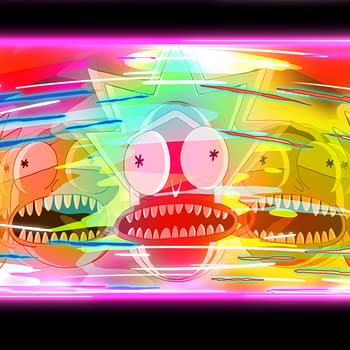Posted in: Review, streaming, Trailer, TV, YouTube | Tagged: bleeding cool, cable, comic books, Comics, Japanese Spider-Man, Kamen Rider, kikaider, manga, marvel, Marvel Comics, marvel's 616, stan lee, streaming, television, Tokusatsu, tv, tv shows
Marvel's 616: Japanese Spider-Man was Marvel's Gonzo Global Effort
Marvel's 616 kicked off with an episode all about Japanese Spider-Man, an interpretation of Spider-Man that's considered so gonzo and nutty that Marvel suppressed its release in the US for 30 years. Then Marvel released it online in 2009 and the series got a cult following. Instead of "your friendly neighborhood Spider-Man", you get "EMISSARY FROM HELL, SPIDER-MAN!" He drove a special car and piloted a spaceship that looked like a Sphinx – just because Japan! – that transformed into a giant robot called Leopardo. He fought the deadly Professor Monster and Amazoness and their squawking henchmen called Ninder. His enemies were monsters inspired by Japanese folklore, kaiju, and yokai. He preached justice and pluck to little boys! How could you not love that?
Marvel executive Gene Pelc is interviewed on how he went to Japan in the 1970s to sell licenses to Marvel comics there since no American comics were sold or popular in the world's biggest comics market. He ended up landing Spider-Man at Toei Studios, which produced many of the biggest tokusatsu – "superhero' – series in Japan. The show also interviews the main cast members, stunt performers, designers, and directors of the show who gave heartfelt accounts of their time producing it. Basically, the Japanese makers just did whatever the hell they wanted with the show, paying no mind to the original version of Spider-Man other than the contractual obligation of keeping his costume and abilities intact. The rest was just turning Spider-Man into a tokusatsu show in the same vein as Kamen Rider and Kikaider. I wonder why they don't mention there was a manga series as well, drawn by Ryoichi Ikegami, creator of Crying Freeman, in one of his first-ever jobs.
The show ran from May 1978 to March 1979. It was shot on a tiny shoestring budget. Time and money were tight. They usually shot two episodes in a week. They recycled the same shots over and over again in virtually every episode, usually of explosions, robot transformations, the hero's transformation into his costume. This was standard for Japanese genre shows at the time and even today. It's a way to save money since shows are always strapped for cash.

Marvel's 616 does a good job of pointing out how Japanese Spider-Man led to the Power Rangers and the Transformers. It introduced the super-sentai genre to piloting giant robots, even though the "teens piloting giant robots" genre already existed. It made the Japanese decide that a superhero team piloting a giant robot was that extra ingredient needed for the genre. Spider-Man's transforming robot also directly led to the creation of the Transformers in the US.
Of course, it all comes back to Stan Lee again, showing him as a benevolent and wise arbiter of superheroes as he praises the culturally unique aspects of the Japanese version of Spider-Man while glossing over Marvel being so embarrassed the company kept US audiences from seeing the show for 30 years. What starts out as a documentary showing how goofy Japanese Spider-Man was, gradually becomes another life-affirming treatise on how Marvel Comics has a positive impact on people's lives, both for the creators and the audience. In the end, Marvel's 616 is another show that pushes Marvel as more than a brand or series of superhero comics, but an entire lifestyle.
Marvel's 616 is streaming on Disney+.















